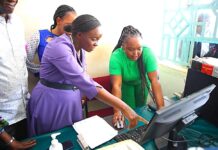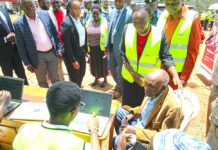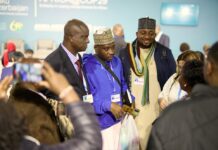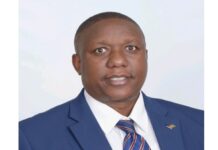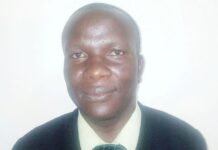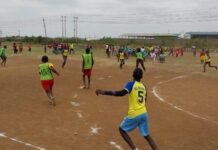
- Started in 1966 by the Seventh Day Adventist (SDA) Church, Nyambaria High School has grown from a small school to now an academic power house envied by many in the country.
- A massive bio-digester is almost complete. This will help cut the funds spent on methane gas used in science laboratories.
- Chief Principal Charles Onyari also hints at the school starting an aviation course in the coming years. They will purchase a light aircraft for practical lessons.
For many years, Nyambaria High School experienced gradual and steady growth—quietly building a strong academic and co-curricular foundation. This consistent progress laid the groundwork for the school’s rise to national prominence.
Today, the Nyamira County-based national school admits students from all corners of Kenya. After four years, they return home mature, focused, and equipped with grades that propel them to the next level of study.
Founded in 1966 by the Seventh Day Adventist (SDA) Church, Nyambaria High School has steadily grown from a modest institution into a formidable academic force admired across the country.
Its elevation to national school status 12 years ago followed a consistent upward trend in its Kenya Certificate of Secondary Education (KCSE) performance. This milestone became a springboard for the institution, helping it overcome obstacles and fully embrace the role of a top-tier national school.
Chief Principal Charles Onyari has overseen major infrastructure developments at the school—projects made necessary by the steady rise in student enrollment driven by the school’s impressive academic record.
“The students’ population has considerably grown in the past few years and hence the need to erect new structures to supplement the existing ones,” Onyari explains.


New facilities in the school include a tuition block consisting of 25 new classrooms.
The big numbers, he says, have made the school management persuade its neighbors to surrender their land for the school’s expansion.
This has increased the school’s land by 18 more acres.
“A new boys’ hostel has been constructed that is housing over 700 students and is aimed at decongesting the existing ones,” Onyari says.
The construction of a 6,000 capacity multipurpose hall is ongoing at the school, which will be used as dining and theater.
The facility will also host indoor games and conference meetings.
To cut on costs of buying charcoal as a source of fuel, the institution has installed a massive Liquefied Petroleum Gas (LPG) station.
Onyari notes the station has been an economical and clean source of fire.
“The gas is faster, clean, and saves on both time and cost as compared to wood,” he says.

To ensure enhanced security of the learners, there is ongoing construction of a perimeter wall for the entire compound.
This will control the movement of students and strangers in and out of the school.
Hygiene in the school is highly regarded, and there are modern washrooms for both teachers and students conforming to the health requirements and standards.
Pathways and the assembly point have all been covered by cabro blocks to keep away dust and mud hence keeping the learners neat at all times.


Looking Back
Before Onyari took over, learners could spend most of their time cleaning whenever it rained.
With the introduction of well covered pathways, he says, the boys spend very little time on their personal hygiene.
A massive bio-digester is almost complete. This will help cut the funds spent on methane gas used in science laboratories.
“With our numbers, it’s been challenging for us to purchase the gas owing to the number of practical science lessons we normally have,” Onyari says.
“An idea came into my mind that since we have enough raw materials for the manufacture of the gas, a bio-digester would come in handy, and once it’s complete, we will save a lot.”

To cut on the costs of paying for electricity, solar power has been tapped and is normally used to effectively light the compound and this has boosted the security of learners.
Further, extra classrooms have been constructed to handle teaching of subjects in line with the Competency Based Curriculum (CBC) directives.
The curriculum has also been broadened and more technical subjects introduced including computer studies, building and construction, drawing and design, dressmaking among others.
“Additional computers have been installed in the school to ensure seamless and effective teaching and learning processes,” the principal says.
The computers are connected to fast internet that’s serviced regularly to ensure that ICT learning runs uninterrupted.
A car and bus park has been built within the compound for the benefit of teachers, visitors and the school’s fleet.


This brings order in the institution and controls unauthorized traffic around tuition blocks.
“On the welfare of the learners, the school serves a variety of balanced diets daily,” Onyari says.
The Chief Principal says that there are regular guidance and counseling ‘clinics’ in school, where teachers are intensively involved.
The school chaplain is also closely involved in guided pastoral programs with student leaders taking up roles to manage other students on spiritual nourishment.
Co-curricular Activities
Apart from the school’s prowess in academics, it also prides itself in co-curricula activities.
In 2022, the school proceeded to national competitions in the music category.
In 2023 and 2024, the boys excelled in athletics at the national level.
One student participated at the East African Competition and later in the United States of America (USA).
This year, the Principal believes the school will again shine in field events as it now has more play fields that are ready for use.

Good Leadership
The school has had committed managers ever since its inception, which can be witnessed through its academic performance and infrastructural development.
“I took up the school and built on the vision of former leaders,” Onyari says.
“The school has been doing well in its end of course examinations courtesy of good management and cooperation support from other stakeholders.”
The school has four Deputy Principals; Kennedy Isaboke (Administration), Peter Onsongo (Boarding), Robert Kerosi (Academics) and Kefa Ogega (Security).

In 2022, the school witnessed a 100% transition to university in the examination sat by 484 students making it the best school in the country (Kenya 1) whereas in 2023, 543 transitioned to university.
In 2024, 677 managed direct entry grades to various public institutions.
Onyari hopes that this year, his candidates will produce more quality grades to compete for prestigious courses at university level.
The school has 185 teachers and 72 members of non-teaching staff who work together as a team to ensure success.
Onyari took over the school in 2022 from Boaz Owino, when the teaching staff stood at 102.
There were 2670 students then and the number has since grown to 4500.
The Dream
As the school remains dependable in the society, there are plans to establish a medical facility to attend to all emergencies from students.
Onyari also hints at the school starting an aviation course in the coming years.
This will be the second institution to have such a rare and prestigious course after Mangu High School.
Onyari says that he is reaching out to Gusii leaders to share the idea and come up with a good strategy.
The school will then purchase a light aircraft for practical lessons.
“I intend to incorporate our leaders to nurture the idea of starting up an aviation course in our school,” he says.
“We have enough land for the airstrip and once the idea is accepted, we will go ahead to plan on how to acquire a light aircraft for practical lessons,” added Onyari.
MORE PHOTOS









